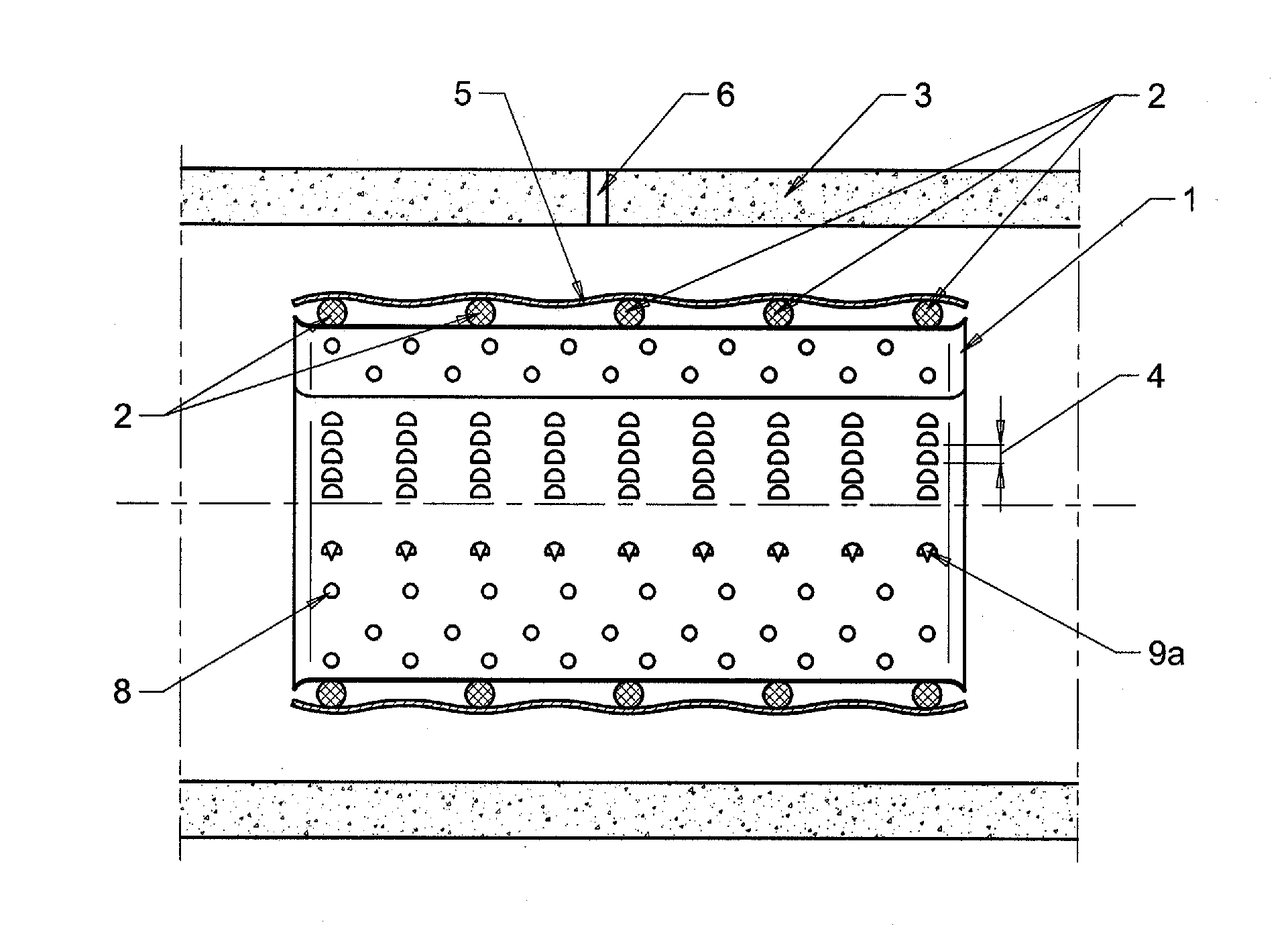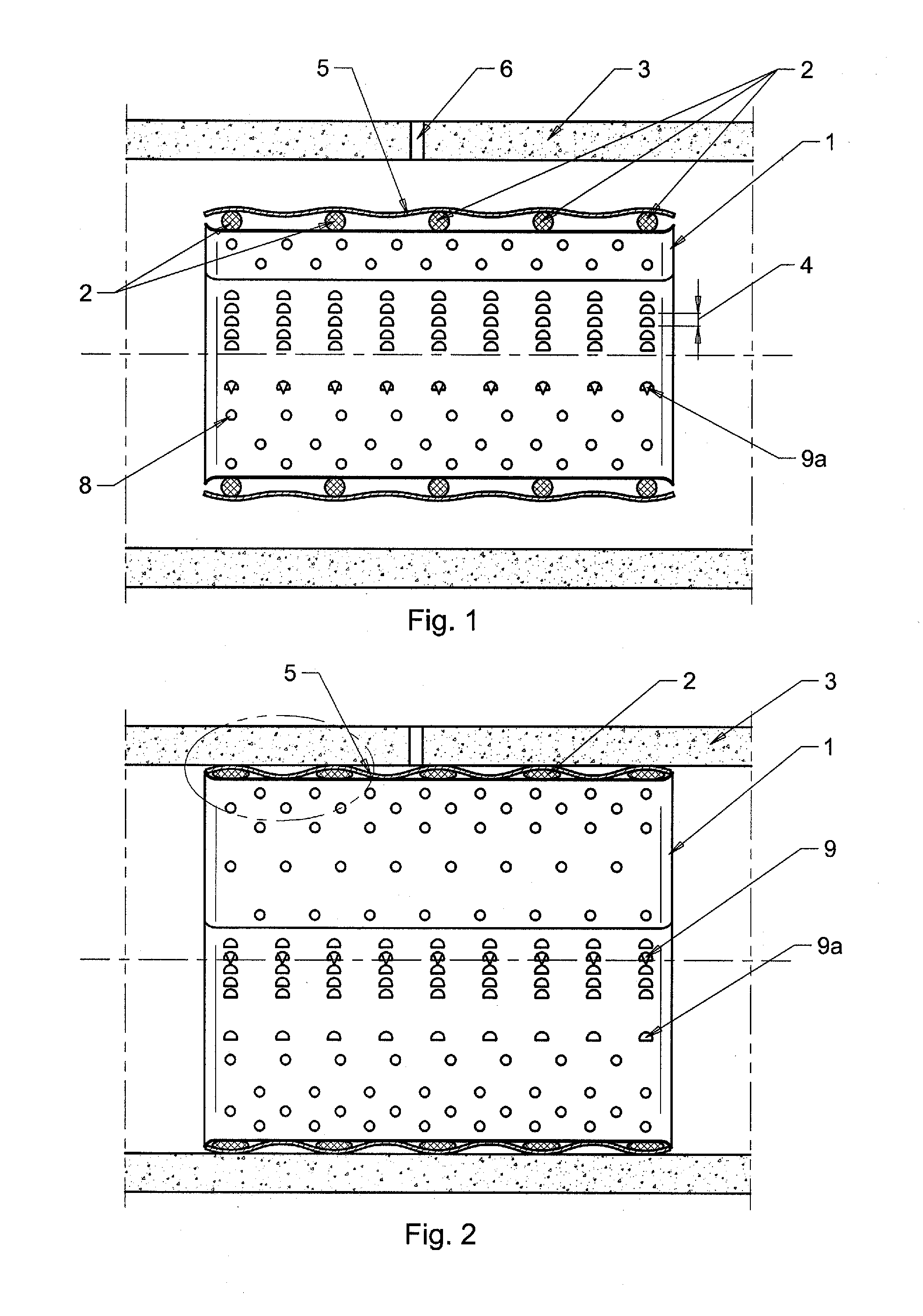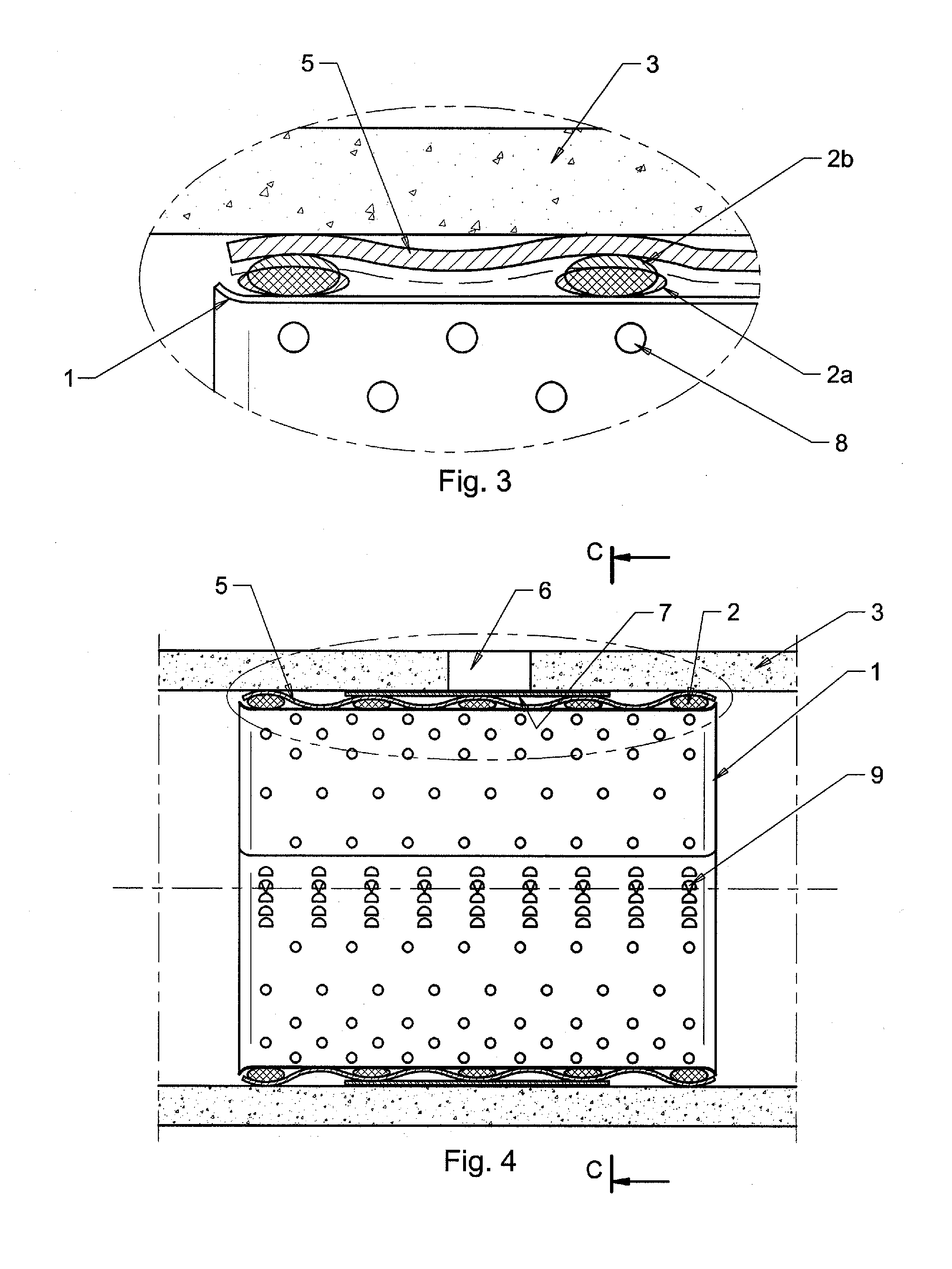Apparatus and method for internal repair of conduits
a conduit and apparatus technology, applied in the direction of shaft lining, tunnel lining, underground chamber, etc., can solve the problems of pollution, water or wastewater entering the conduit system, affecting the repair effect,
- Summary
- Abstract
- Description
- Claims
- Application Information
AI Technical Summary
Benefits of technology
Problems solved by technology
Method used
Image
Examples
Embodiment Construction
[0045]FIG. 1 shows a repair apparatus in the over-coiled pre-installation configuration. The apparatus for internal repair pipes and conduits in accordance with this invention comprises of an expandable core 1, having perforations 8 and equipped with a locking mechanism 9 (shown in FIGS. 2, 4, 7 and 9). The choice of core material, for instance stainless steel, is determined by the chemical regime in the pipe. Further, a number of O-rings 2, made from solid resilient, elastic material, are applied over the outer surface of the core 1. The quantity, the body diameter, and softness of the O-rings 2 depend on possible conduit 3 diameter changes with internal / external pressure and / or temperature changes. From another side, such parameters of the O-rings depend on chosen installation pressure of the apparatus and steps 4 changes in the core 1 circumference, i.e., the incremental distance between successive locked positions of the expandable core 1, if a chosen locking mechanism 9 is a st...
PUM
 Login to View More
Login to View More Abstract
Description
Claims
Application Information
 Login to View More
Login to View More - R&D
- Intellectual Property
- Life Sciences
- Materials
- Tech Scout
- Unparalleled Data Quality
- Higher Quality Content
- 60% Fewer Hallucinations
Browse by: Latest US Patents, China's latest patents, Technical Efficacy Thesaurus, Application Domain, Technology Topic, Popular Technical Reports.
© 2025 PatSnap. All rights reserved.Legal|Privacy policy|Modern Slavery Act Transparency Statement|Sitemap|About US| Contact US: help@patsnap.com



